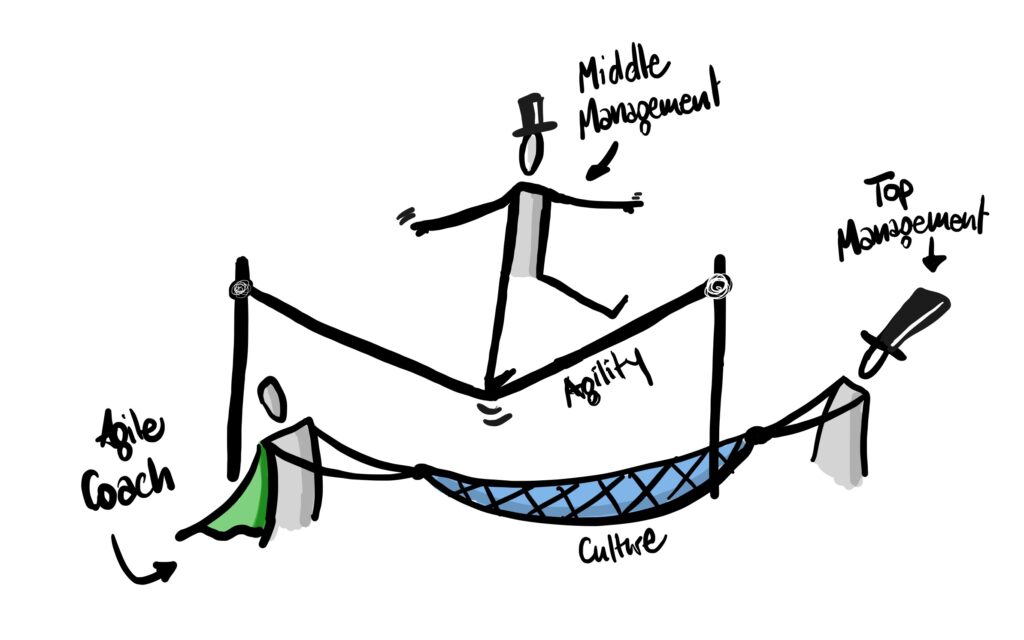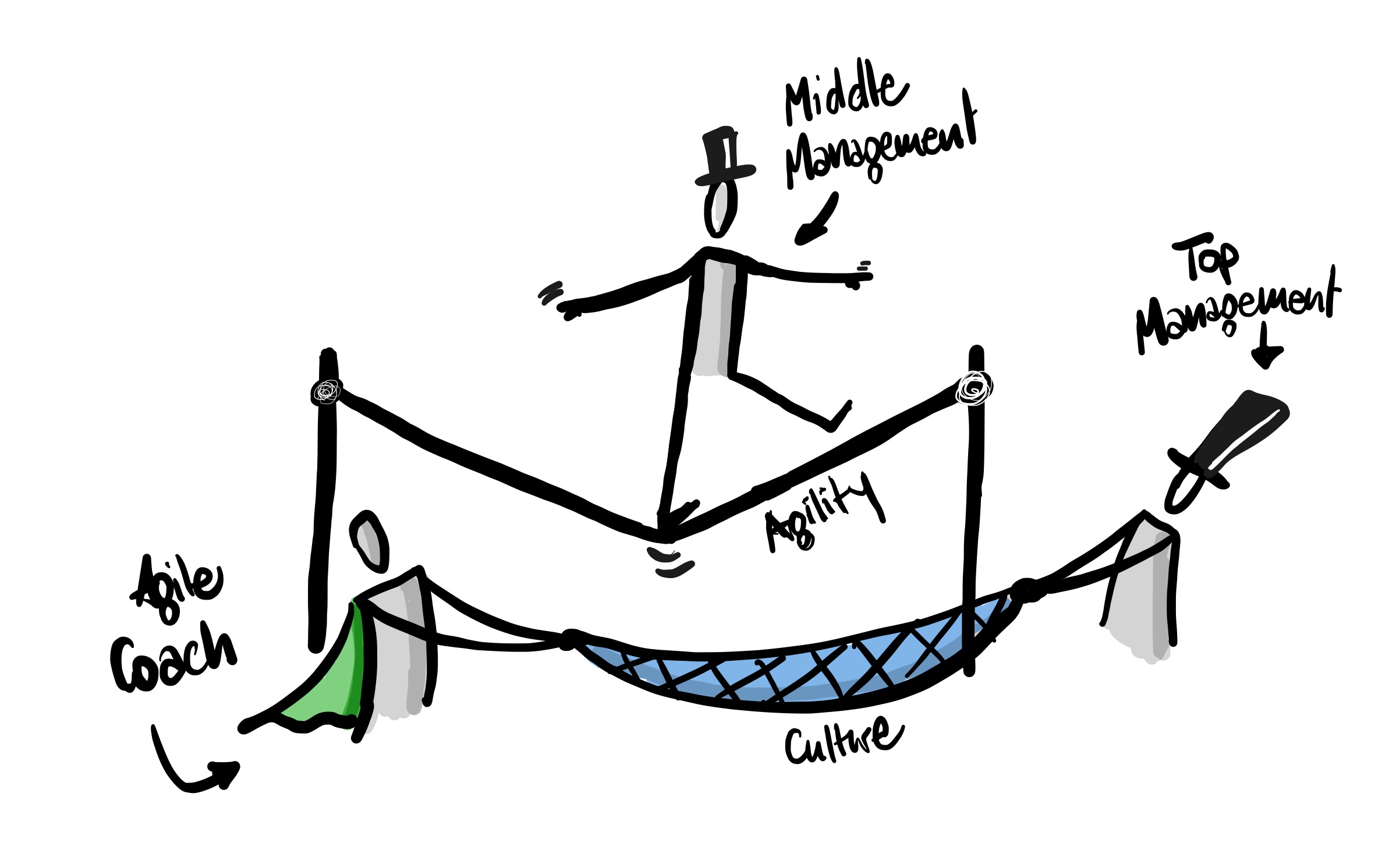
If you are a professional agile coach, scrum master or experienced consultant, the following scenario is likely something you have come across before. During transformation processes, top management is not enabling agile principles to effectively permeate the organisation. This is largely because they are failing to change their mindset first and to take the middle management along in this transformation process so those do not become organizational actors, who are more likely to stand in the way of a meaningful change process.
This tendency is regularly evidenced by the comments of employees. Frequently, staff blames second-level leaders as more likely to favour a top-down managerial approach, displaying resistance to a more open, agile mindset. However, the blame cannot be entirely laid at the feet of these middle managers. Often top management shows little interest in explaining the effects of the change process or to convince the managers to fully support the change process. This is because the top management has not internalised the agile principles themselves. This creates the impression that only the middle management is the clay layer that is not willing to adapt — which is not entirely true.
The real attitude of second-level management to agile transformation
Perhaps the most meaningful insight comes from second-level management themselves. This layer of leadership feels regularly excluded from the process, citing that they’re missing information, not receiving orientation and generally feel shut out from the overall opinion-making process concerning the change. From their point of view, top management lacks commitment to lead the way. According to middle management, top management needs to invest more time in providing orientation and explaining what impact the change has on the operational daily work of the organisation as a whole.
Admittedly, as an agile coach, I frequently observe that second-level management has a sympathetic attitude as to how these conditions arise. They link their perspective to top management’s busy schedule and their tendency towards distraction in general. In this respect, the opinion of the second management level is extremely helpful to better understand what the real problem is.
How top management can better implement change
As an agile coach, you may have observed that top management does micromanage to a great degree. Many members of the executive team are in fact not the masters of their day-to-day schedule but rather their slaves. The reason is that top management is attempting to manage many different issues in detail instead of having most operational tasks solved by their staff. This leads to a lack of time to lead the people what is especially crucial in change processes.
Top management acts according to the established leadership principles of the previous century. This supports a pervasive attitude that top management is supposed to be the one and only mainstay and the all-seeing eye of the company. It is assumed that the top management has to have a comprehensive understanding of every single issue that occurs in “their” organisation, although by now, this is simply impossible in a complex, and dynamic environment.
This attitude characterises the leadership style of top management in most of the companies I have worked with. It is either based on a lack of awareness of their leadership responsibility towards their employees or on a general lack of trust. From top management point of view, others are regularly not seen as equally capable of contributing to the success of the company like them. Especially when it comes to critical feedback about their own responsibilities. In addition, top management sometimes even believes that second-level employees and managers must be excluded from the comprehensive overview of the company in order to secure their own power. In fact, these attitudes are part of the mindset that has to be changed by the top management upfront.
As long as the top management does not start to collaborate with each and everyone in the company on eye level, spend their given time mainly to lead their people and support an environment of trust and continuously learning, they will remain captive within their overwhelming workload and therefore undermine the success of the agile transformation as a whole. The excessive workload of the top management based on micromanagement leads to a lack of leadership. And leadership is crucial for the success of any change process particularly when it comes to an agile transformation.
Taking on the mantle of the agile coach
In summary, for an agile transformation to really work, top-level management needs to focus on their communication and their leadership above all else. Although undoubtedly valuable, an external agile coach is not the universal solution to all challenges – the top management needs buy-in fully as well. Merely implementing agile principles as a methodology does not make for an agile organisation. Instead of of top managers tendencies towards micromanagement and the quest for an omnipotent view of the company, they must carefully consider how an agile mindset can permeate the entire organization.
In conclusion, top management needs to take the time to involve especially second-level management. These players – who are so often blamed for stymieing transformation processes – need to be more fully included in any change process but especially in an agile transformation process. After all, the keystones of agile transformation are open communication, trust and orientation enabling everybody involved to perform at their best. Therefore, the top management needs to lead by example and fully embrace agile.
The author of the article Nils Kramer is a valuable part of the Netzwerkknoten network. As management consultant and agile coach, he is specialised on leadership and transformation processes.

